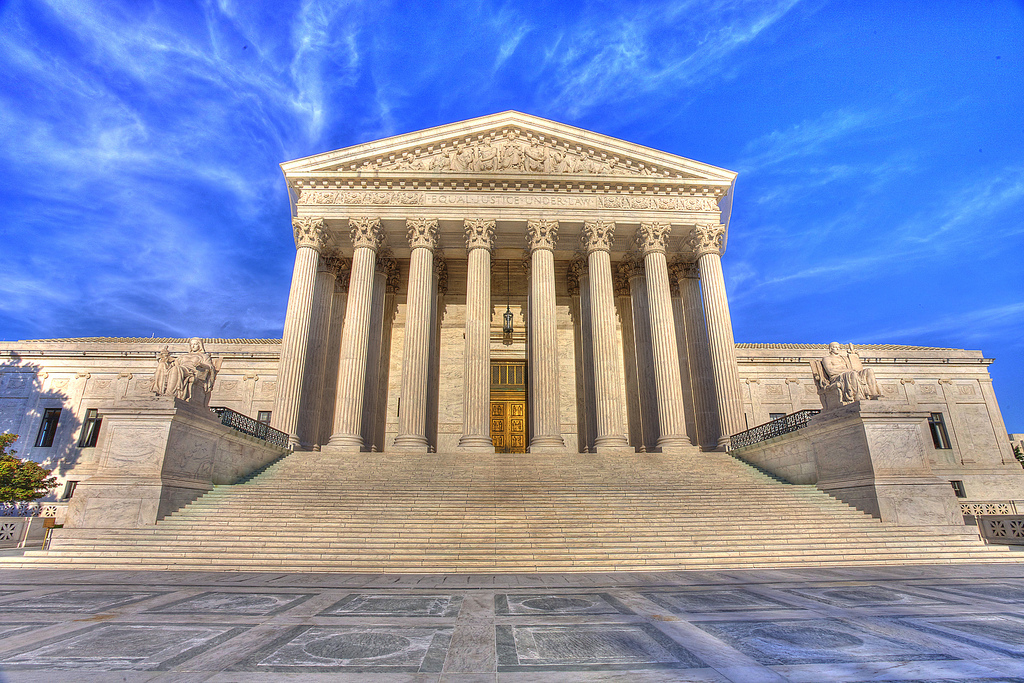This Tuesday, December 10, our nation’s highest courts will hear two landmark Clean Air Act cases that have big implications for public health. First and foremost, the Supreme Court will hear arguments Tuesday on the Environmental Protection Agency’s Cross-State Air Pollution Rule.
Back in 2011, EPA unveiled this update of a critical public health protection that would reduce power plant emissions of sulfur dioxide and nitrogen oxides, dangerous pollutants that form soot and smog and contribute to poor air quality days and respiratory illnesses affecting millions of Americans. They call this the Cross State Air Pollution Rule because it curbs the millions of tons of air pollution that travel downwind and across state lines each year. Pollution doesn’t stop at state lines.
Unfortunately, the D.C. Circuit Court of Appeals handed down an extremely controversial divided ruling in August of 2012 that struck this rule.
The EPA and a coalition of environmental and public health organizations – including the Sierra Club – sought review by the Supreme Court, and on June 24, 2013, the Court agreed to hear the case. Briefs submitted by the EPA, our coalition of the American Lung Association, Environmental Defense Fund, the Natural Resources Defense Council, and many others make the case that the DC Circuit’s ruling is unfounded, contrary to the Clean Air Act, based on a misunderstanding of interstate pollution, and seriously jeopardizes the ability of downwind states and the EPA to protect millions of people from dangerous ozone and particulate matter pollution.
The benefits of the Cross-State Air Pollution Rule are remarkable. According to the EPA, this standard would prevent up to 34,000 deaths annually, would prevent 1.8 million days of missed work/school annually, and would provide $120-280 billion in benefits every year at a cost of only $1.8 billion in the first year, and roughly $1 billion a year thereafter. The benefits-to-cost ratio is about 100 to 1!
What’s more, for many downwind areas, 75 percent or more of local air pollution comes from upwind states. In parts of Connecticut, more than 90 percent of ozone pollution is due to pollutants flowing in from other states. Without this cross-state protection, these states simply cannot resolve their air quality problems, putting the health of their citizens at grave risk.
Industries and states and many others are standing together calling for implementation of the Cross-State Air Pollution Rule. Just today, underscoring the urgency of the problem, governors of eight Northeastern and Mid-Atlantic states petitioned EPA Administrator Gina McCarthy to reduce air pollution blowing into the region from nine Midwestern and Appalachian states.
The second major public health protection coming before a court this week is the EPA’s Mercury and Air Toxics Standard. Coal plants are the largest source of mercury pollution in the U.S., so of course the industry is challenging this standard that requires them to stop dumping so much mercury into our air and water.
Mercury is a powerful neurotoxin that can damage the brain and nervous system. Mercury is of special concern to women who are pregnant or thinking of becoming pregnant, since exposure to mercury can cause developmental problems, learning disabilities, and delayed onset of walking and talking in babies and infants.
The U.S. Court of Appeals for the D.C. Circuit will hold oral argument on December 10 regarding these challenges by industry to this critical public health mercury standard.
Make no mistake about it – this Tuesday, December 10, is a big day for clean air and public health in our nation’s highest courts, and there are tens of thousands of lives on the line.


